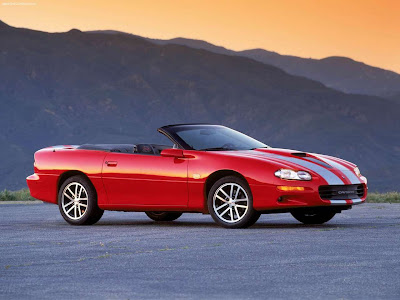



The Chevrolet Camaro was introduced in North America by the Chevrolet Motor Division of General Motors at the start of the 1967 model year as competition for the Ford Mustang. Camaro advertising would first be found on AM top-40 stations of the day - stations which appealed to young adults. Although it was technically a compact car (by the standards of the time), the Camaro, like the entire class of Mustang competitors, was soon known as a pony car. It may also be classified as an intermediate touring car, a sports car, or a muscle car. The car shared the same platform and major components with the Pontiac Firebird, also introduced in 1967. Production of both cars ceased in 2002 with only the Camaro going back into production in 2009.
Though the car's name was contrived with no meaning, GM researchers reportedly found the word in a French dictionary as a slang term for "friend" or "companion." In some automotive periodicals before official release, it was code-named "Panther." Historical examples exist of Chevrolet product managers being asked by the automotive press "what is a Camaro?", with the tongue-in-cheek answer being "a small, vicious animal that eats Mustangs," a sideways reference to the competing Ford Mustang.
The Camaro was the flagship for Chevrolet, and was for many years one of its most popular models. If its frequent inclusion in automotive enthusiast magazines is any indication, the Chevy Camaro is one of the most popular cars for modification in automotive history.
2002
The Camaro remained almost completely unchanged from 1998 to 2002. Sales continued to decline as the market gradually switched to smaller four and six-cylinder powered cars. GM announced that 2002 would be the final year of production for the Camaro, as sales numbers were not high enough to justify a redesign and the car could not be priced high enough to make low volume production profitable.
A new dash plaque above the audio system commemorated the 35th anniversary of Camaro production.
A special 35th Anniversary Edition was offered for the SS trim level. It included nose-to-tail stripes, embroidery on the front headrests, and unique 17" wheels. The 35th Anniversary Camaro was only available as a convertible or with T-tops. 3,000 Camaros with the anniversary package were produced for the United States and 152 for Canada.
The final fourth-generation Camaro was built on August 27, 2002; Total production for 2002 was 42,098. The Sainte-Thérèse plant, the only GM plant in Canada outside of Ontario, then closed down.
